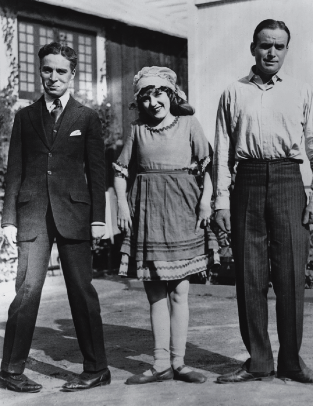Movies and Film: Stars' Bucks
Stars' Bucks
Because the early flickers were considered a debased form of entertainment, actors often did not want their names associated with them in the credits. In the early 1900s a star actor's salary was very low relative to what it would be in the next decade, with the rise of the major stars like Charles Chaplin, Douglas Fairbanks, and Mary Pickford. Production companies were happy not to name the actors in the credits, lest they begin demanding more money. So, for example, Florence Lawrence was simply known as "the Biograph Girl."
Charlie Chaplin's salary is a good gauge of how early moviemakers learned a star's worth. Every time Chaplin moved to a new studio, his salary increased almost by simply adding a zero on at the end. Beginning at the Keystone studio for a three-figure weekly salary (itself pretty opulent for 1914), Chaplin moved to Essanay for $1,250 per week, then to Mutual for $10,000 per week (and a bonus for signing). Finally, he became a partner in his own studio, United Artists. Quite a cost-of-living increase!

Photo of the United Artists producer/stars: Charlie Chaplin, Mary Pickford, and Douglas Fairbanks.

Excerpted from The Complete Idiot's Guide to Movies and Film © 2001 by Mark Winokur and Bruce Holsinger. All rights reserved including the right of reproduction in whole or in part in any form. Used by arrangement with Alpha Books, a member of Penguin Group (USA) Inc.
To order the e-book book direct from the publisher, visit the Penguin USA website. You can also purchase this book at Amazon.com.
